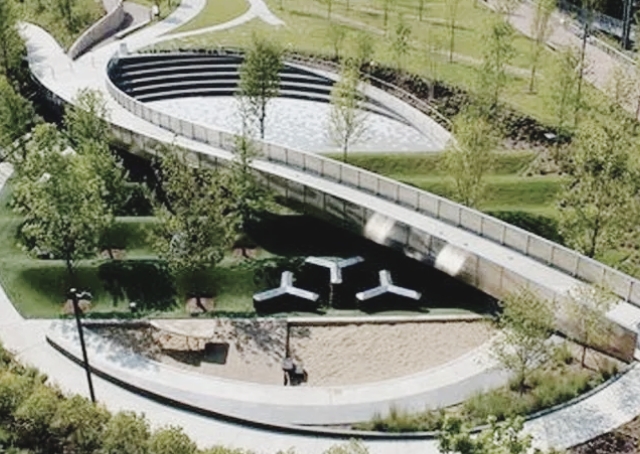Table of Contents
What Is A Rain Garden
Rain garden is used to improve the amount of rain runoff that the soil is able to absorb. It is not like a traditional garden where trees are planted. Rain gardens are also called bioretention facilities.

Bioretention facilities are capable of eliminating contaminated runoff from storm water. This type of facility creates landscaped spaces that reduce the flow rate, overall volume, and pollutant load of runoff from impervious urban areas.
Description Of Rain Garden
Rain gardens use vegetation and organic or synthetic soil media to absorb rainwater and prolong the time it is absorbed by removing and filtering contaminants carried by urban runoff. To reduce or completely eliminate the need for additional irrigation, rain gardens provide techniques to reuse and optimize rainfall.
The lower ambient air and water temperatures that result from planting a rain garden are beneficial. This mitigation strategy is particularly successful in metropolitan areas because there is an abundance of impermeable surfaces, which contribute to the heat island effect.
Wetland marginal plants including wildflowers, sedges, rushes, ferns, shrubs, and small trees are often planted in rain gardens. These plants transpire, releasing water vapor into the environment while absorbing nutrients and water that enter the rain garden. In addition, the deep roots of plants create more avenues for rainwater to enter the soil.
Benefits Of Rain Garden
There are many benefits of rain garden. It provides local flood control, generates beautiful landscapes, filters runoff to improve water quality, and offers a range of planting options.
It also promotes wildlife and biodiversity and connects the building and its surroundings in an integrated and eco-friendly way.
Rain gardens can improve the quality of nearby bodies of water and replenish depleted groundwater supplies.
Additionally, rain gardens reduce the amount of contaminated runoff entering storm sewer systems and surface waters, where it contributes to flooding, erosion, and water pollution. By eliminating the need for typical stormwater infrastructure, rain gardens also consume less energy.
Rain Garden Design
A place where water can accumulate and infiltrate, plants can maintain the rate of infiltration, diverse microbial communities and water storage capacity are essential for a rain garden. A site analysis and assessment of the rainfall load on the proposed bioretention system should come first in the design of rain gardens because infiltration systems control stormwater volume and peak runoff by reducing stormwater runoff.
This will provide individual information about each site, and this information will influence the selection of substrate systems and plantings. Rain gardens should be planned for maximum runoff rates, at least during a potential storm. The ideal design flow rate would then be dictated by the load placed on the system.
FAQ
What Is The Main Function Of Rain Garden?
Rain garden is used to collect rainwater from various places such as roof, driveway, or street and enable it to seep into the ground.
